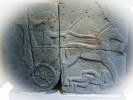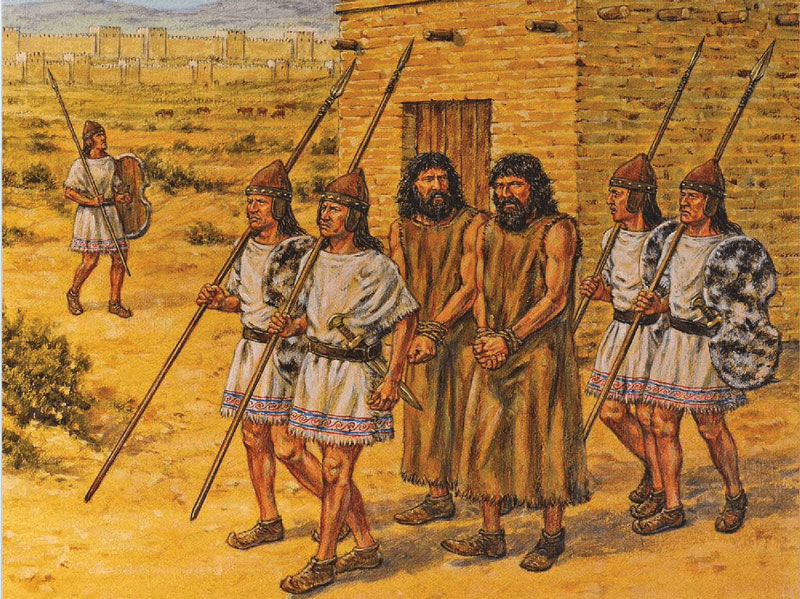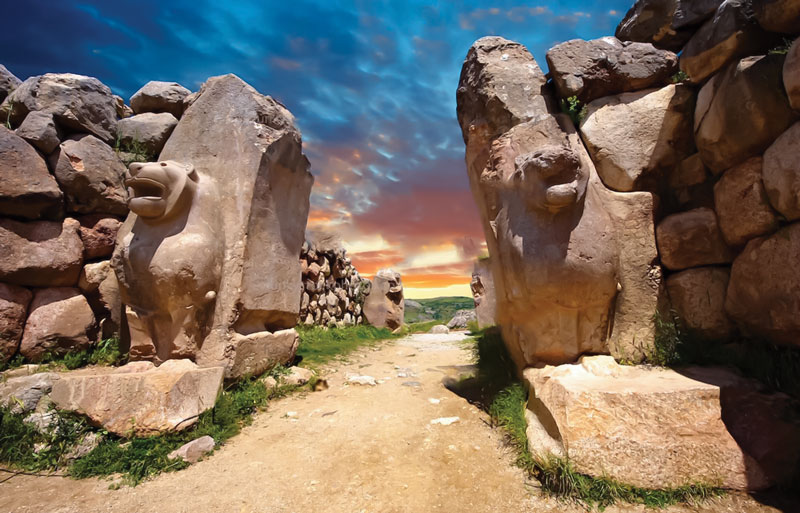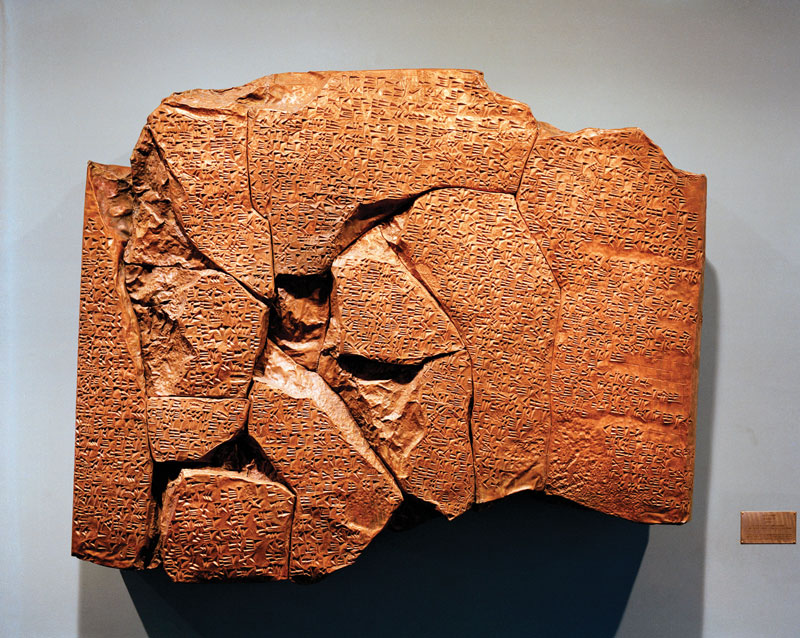The civilization rising from the shadows
The civilization existed in both the Bronze and Iron Ages. Its culture and power lasted from roughly 1600 to 1180 B.C.
The Hittite civilization is commonly regarded as one of the most inscrutable and least remembered civilizations in ancient history. Having thrived in the extensive territory of Anatolia, which corresponds to the current territory of Turkey, the Hittite civilization of Indo-European origin has left an enduring legacy that has been unearthed by archaeologists and historians.
Their beginnings date back to the mid-second millennium B.C., establishing them as a people who spoke Indo-European languages and migrated eastwards from Europe by crossing the Balkans before settling in the fertile region of Anatolia. The city of Hattusa was founded circa 1600 BC, and it eventually became the capital and nerve center of the Hittites.
In its early years, the Hittite society revolved around farming and herding, with people residing in small villages. As they progressed, they structured themselves into a more complex political system, leading to the establishment of the Old Kingdom of Hatti, which ultimately evolved into the formidable Hittite Empire. They established a sophisticated society that consisted of nobles, artisans, merchants, and peasants, under a monarchy with the king as the leader, who also served as the high priest in religious affairs.
Concerning religion, the Hittites were polytheistic, developing a complex and rich mythology that combined Indo-European and local Anatolian influences. Their deities reflected natural phenomena and became an essential aspect of daily life, politics, and military affairs within the Hittite civilization.
Their culture was marked by the capacity to adopt and assimilate cultural elements from conquered populations, consolidating their power and cultural diversity.
The Hittites were pioneers in establishing a legal system and centralized administration. They established the Code of Telipinu, one of the earliest recorded legal codes which dealt with issues pertaining to property, inheritance, and marriage rights. Their emphasis on justice and equality had a significant influence on future civilizations.
Their diplomatic relations with Egypt resulted in the Treaty of Kadesh, one the earliest known peace accords in history. These treaties served to preserve peaceful relations between the two powers and provided a blueprint for future diplomatic agreements in the ancient world.
The Magnificence Under the Reign of Hattusili I
During the reign of King Hattusili I in the 14th century BC, the inhabitants experienced magnificence, marking the beginning of a significant expansion of the Hittite empire. During the rule of Suppiluliuma I around the 13th century BC, the kingdom reached its peak, covering an extensive area from Anatolia to regions of Mesopotamia (now Iraq) and Syria.
The Hittites were among the first to use iron for creating weapons and tools, which enabled them to establish a strong military and commercial influence in the region.
The cultural heritage of the Hittites remains mysterious, just like their history. The language of the Hittites, considered the oldest of the known Indo-European languages, is one of the most remarkable legacies of this civilization. Thanks to the discovery of clay tablets at Hattusa and other archaeological sites, researchers have largely succeeded in deciphering the Hittite enigma, a decipherment that has been fundamental to the study of the linguistic evolution of the Indo-European peoples.
Art and architecture
Hittite art and architecture are a remarkable legacy. The Hittites used the bas-relief technique to create magnificent artworks on the walls of temples and palaces. The art depicted kings, gods, and mythological scenes, such as the construction of the majestic Lion Gates in Hattusa.
The Hittites excelled in bronze basketry, producing exquisite and detailed decorative objects. Nowadays, some of these objects are exhibited in world-renowned museums like the British Museum, the Louvre, and the Pergamon Museum in Berlin.
The archaeological museum of Çorum, which is 155 miles away from Ankara, the capital city of Turkey, is regarded as one of the most modern museums in the country. The museum exhibits rare artifacts from the Copper Age and the early Bronze Age of the Hittites. The Bogazköy Sphinx, portrayed with a human face, a lion's body, and large eagle wings, is a prominent exhibit in the museum and is recognized as the guardian of the entrance gate. It was one of the four carved sculptures used to adorn the gates of Hattusa and dates back to the 13th century BC.
One notable exhibit at the Archaeological Museum of Çorum is a stone-carved head of a god from 1200-1650 BC, depicting the face in perfect detail. Another remarkable artifact at the museum is a two-meter-high ceramic pitcher, crowned with a bull's head symbolizing Teshub, who is Hittite mythology's deity of Heaven and Storm.
The Collapse of the Hittite Empire
The Hittite Empire collapsed around 1180 BC, as a result of both invasions by the Sea Peoples and internal conflicts. Despite its fall, the Hittite Empire has left a lasting impact on the region's memory and culture. According to recent studies, the Hittite Empire's decline may have been caused by environmental changes that led to colder and drier climate conditions.
Following the Hittite Empire's collapse, Anatolia experienced fragmentation into various small kingdoms and city-states. Many states incorporated aspects of Hittite culture and used Hittite in inscriptions and documents for centuries after the fall of the Hittite empire.
The historical influence of the Hittites can also be seen in the records of other ancient civilizations, such as the Egyptians, Assyrians, and Babylonians, who mention them in their texts.
These references provide insights into the political and commercial interactions of the time, highlighting the Hittites' significance on the international stage during the Bronze Age.
Recent archaeological discoveries, particularly the clay tablets discovered in the ruins of Hattusa and other sites, have been an invaluable source of information for achieving a greater understanding of the Hittites, as well as their contributions to the development and progression of ancient civilizations.
Fuentes Bibliográficas
Bryce, T. (2005). The Kingdom of the Hittites. Oxford University Press.
Cline, E. H. (2014). 1177 B.C.: The Year Civilization Collapsed. Princeton University Press.
Mora, C. F. (2009). Hittite Studies in Honor of Harry A. Hoffner, Jr. On the Occasion of His 65th Birthday. Eisenbrauns.
Gurney, O. R. (2004). The Hittites. Penguin Books.
Hoffner, Jr., H. A. (1998). The Hittites and Their Contemporaries in Asia Minor. University of Michigan Press.
Text: Amura ± Photo: Osprey, Adam Hook, World History, WPT, Art Photo Prints









